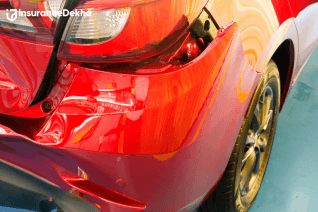How to Buy a Second-Hand Car: A Step-by-Step Guide
Buying a second-hand car can be a smart and budget-friendly decision, if done right. With the right research, inspections, and documentation, you can avoid common pitfalls and get a reliable vehicle at a great price. This complete guide walks you through each step of the process, helping you make a confident purchase.

Why Buy a Second-Hand Car?
Second-hand cars offer several advantages over new ones:
-
Lower Cost: Pre-owned cars are significantly cheaper than new models.
-
Slower Depreciation: New cars lose value quickly in the first few years, whereas used cars retain their value better over time.
-
Reduced Insurance Costs: Insurance premiums are typically lower for used cars.
-
More for Less: You may be able to afford a higher-end model within your budget.
Step 1: Set Your Budget
Before you begin your search, define how much you’re willing to spend. Don’t just focus on the purchase price, include:
-
Registration and insurance
-
Routine maintenance and repair costs
-
EMI or loan repayments (if applicable)
Make sure to leave some buffer for post-purchase expenses like servicing or minor repairs.
Step 2: Choose the Right Car
Your ideal car depends on your usage, lifestyle, and location. Consider:
-
Fuel Type: Petrol, diesel, CNG, hybrid, or electric.
-
Fuel Efficiency: Important for daily city commutes.
-
Maintenance Costs: Check spare part availability and service network.
-
Brand Reliability: Some brands have better resale value and durability.
-
Safety Features: Look for airbags, ABS, crash test ratings, etc.
Online reviews, owner forums, and resale data can help guide your decision.
Step 3: Explore Buying Platforms
There are several channels to find second-hand cars. Each has pros and cons:
-
Online Marketplaces
Websites like CarDekho offer wide selections. Always verify the seller, review multiple listings, and avoid upfront payments.
-
Certified Pre-Owned (CPO) Programs
Authorized dealers sell used cars that are inspected, refurbished, and come with warranties, ideal if you want peace of mind.
-
Local Dealerships
Dealers offer variety and financing help, but do your own inspection and compare prices elsewhere.
-
Direct Owner Sales
Buying from an individual usually gives better prices, but you’ll need to be thorough with paperwork and car condition checks.
Step 4: Inspect the Car Thoroughly
A detailed inspection helps you avoid hidden issues.
Exterior Check
-
Look for dents, rust, mismatched paint, or signs of accidents.
-
Check tires for wear and alignment issues.
Interior Check
-
Test the seats, dashboard, windows, infotainment system, and air conditioning.
-
Look for water damage, musty smells, or mold.
Engine and Mechanical Check
-
Inspect for oil leaks, strange engine sounds, or excessive exhaust smoke.
-
Check fluid levels, belts, and hoses.
-
Make sure gears shift smoothly in both manual and automatic cars.
Test Drive
Take the car on different roads, highways, city, and rough terrain. Pay attention to:
-
Braking response
-
Steering alignment
-
Gear shifts
-
Unusual noises or vibrations
-
Dashboard warning lights
-
Cabin noise and overall comfort
Step 5: Verify the Car’s History
Ask the seller for service records, ownership details, and accident history. You can also use the m-Parivahan mobile app to verify records.
Key Documents to Check:
-
Service History: Regular servicing means better car health.
-
Accident History: Look for signs of structural repairs or repainting.
-
Loan/NOC: Ensure the car is free from loans or has a valid No Objection Certificate.
Step 6: Understand the Legal Paperwork
Proper documentation is essential for legal ownership and peace of mind. Ensure the following documents are in order:
-
Registration Certificate (RC): Confirms ownership and registration.
-
Insurance Policy: Must be transferred to your name.
-
Pollution Under Control (PUC): Certifies emissions compliance.
-
No Objection Certificate (NOC): Required if the car is from another state or was financed.
-
Form 35: Needed to remove hypothecation (if the car was under a loan).
Step 7: Negotiate the Price
Don’t accept the first price. Use your research and inspection findings to negotiate:
-
Compare prices of similar models online.
-
Use mechanic evaluations to ask for reductions.
-
Point out wear and tear to justify your offer.
Step 8: Finalize the Deal and Ownership Transfer
-
Payment
Use safe methods like bank transfers, demand drafts, or escrow services. Avoid full cash payments until paperwork is complete.
-
Ownership Transfer
Submit Form 29 and 30 at the RTO for the legal transfer of ownership. Update the insurance to reflect your name.
Step 9: Post-Purchase To-Do List
-
Get the car serviced before regular use.
-
Save copies of all documents (physical and digital).
-
Consider upgrading insurance if needed.
-
Keep the RTO acknowledgment slip and new RC safe.
Buying a second-hand car isn’t just about finding a good deal, it’s about ensuring long-term value and safety. With careful research, thorough inspection, proper paperwork, and smart negotiation, you can enjoy a great ride without breaking the bank.














































